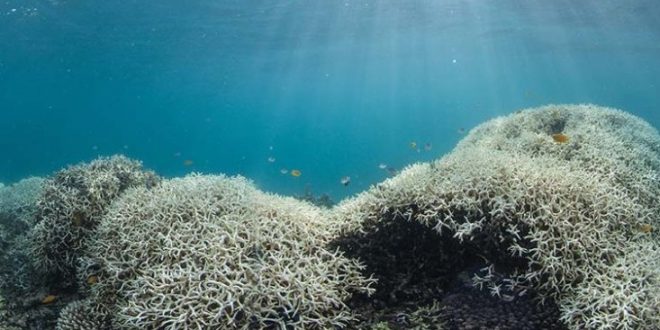Researchers at the University of Sydney are developing virtual 3D maps of the Great Barrier Reef to print artificial replacements.
Off of the coast in Australia, the majestic Great Barrier Reef is dying at an alarming rate. Increasingly overheated seawater and acidification has caused massive bleaching to this vital underwater ecosystem.
Researchers from the University of Sydney are aiming to protect the coral reef and the variety of life that thrives off of them. Dr. Renate Ferrari and her associate professor Will Figueira are creating virtual 3D maps of the Great Barrier Reef.
Their aim is to map out how environmental changes are negatively impacting and also altering the structure of the ecosystem. These models are being used to 3D print coral prosthetics, which could be planted to support the reef while it recovers from bleaching and storms.
Virtually Mapping and 3D Printing the Great Barrier Reef
To map the Great Barrier Reef, the scientific team is using a new technology derived from photogrammetry, making 3D reconstructions from photos. By creating accurate models of the coral, they can print out artificial coral with a perfect fit.
Dr. Ferrari and Figueira have developed the Ecological 3D Modelling Hub to quantify the structure of the reef ecosystem. This virtual map allows the research team to measure, monitor, and model prosthetics to protect the fragile coral reef.
In the past, artificial reefs have been created with sunken ships and also cinder blocks. But with 3D printed reefs, the University of Sydney researchers can replicate the precise shape of the natural environment.
Dr. Ferrari explained the benefits that 3D printing technology could provide to this decimated ecosystem:
“With the 3D-printed reefs, that’s the main advantage. You’re providing the exact same structure that an actual natural reef provides, because we got the models from the reefs before they bleached. We are literally replicating it.”
Could 3D Printing Save the Great Barrier Reef’s Ecosystem?
The researchers have already tested the 3D printed artificial coral underwater, proving it to be an excellent crutch for the struggling ecosystem. The fitted prosthetics would provide fish with a habitat, also allowing them to eat the algae that kills coral reefs. Additionally, this artificial reef would act as a structure for real coral to regenerate on.
Thus far, the northern section of the Great Barrier Reef is completely decimated by coral bleaching, but the southern section is still colorful and relatively intact.
The researchers are aiming to plant these artificial coral sometime this year, but still need to accumulate more funding. The amount of bleached sites they will be able to reach will be dependent on how much support the project has. The pilot program alone would cost around $150,000.
While some may think there’s no hope for these dead batches of coral, Dr. Ferrari has hope that 3D printing can help resuscitate the Great Barrier Reef. Still, she warns that the real issue here in global warming, and that widespread coral bleaching is just a symptom of this overarching disease.
Agencies/Canadajournal
 Canada Journal – News of the World Articles and videos to bring you the biggest Canadian news stories from across the country every day
Canada Journal – News of the World Articles and videos to bring you the biggest Canadian news stories from across the country every day



